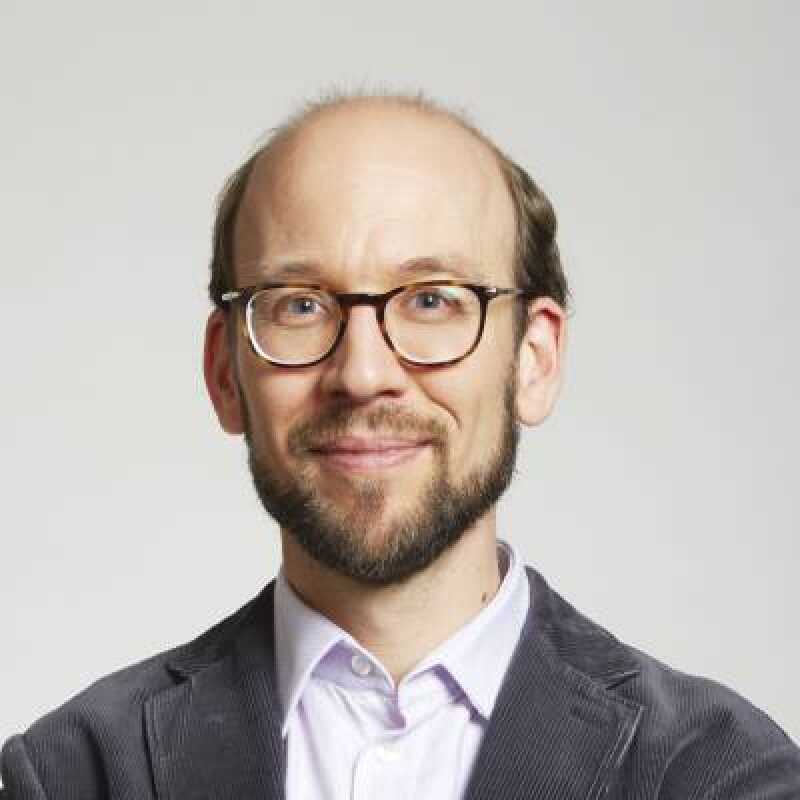- University of Kent
- Physics and Astronomy at Kent
- People
- Dr Gunnar Möller
Dr Gunnar Möller


Dr Gunnar Möller is a condensed matter theorist with an interest in strongly correlated and topologically ordered materials. Thanks to his expertise in state-of the art computer simulations, he currently holds a Royal Society University Research Fellowship, which allows him to further develop ambitious new numerical approaches to study superconductors or heavy fermion compounds.
Gunnar graduated with a French Master's degree (Diplome d'Etudes Approfondies) in Theoretical Physics from the Ecole Normale Supérieure in Paris (2003). He pursued his PhD at the University of Paris XI as a member of the Laboratoire de Physique Théorique et Modèles Statistiques. During his doctoral studies, he also visited Professor Steve Simon's group at the Bell Laboratories, Murray Hill, NJ.
On completion of his PhD in 2006, Gunnar moved to Cambridge, UK, to take up a postdoctoral position in the group of Professor Nigel Cooper. He developed his personal line of research on strongly correlated phases of matter as a Research Fellow at the Cavendish Laboratory thanks to the support of several prestigious fellowship awards, including a Trinity Hall Research Fellowship (2008-2011), a Leverhulme Early Career Fellowship (2011-2013), and a Royal Society University Research Fellowship (2013-2016). His international collaborations were supported by an ICAM Fellowship for a collaboration with Professor Victor Gurarie at UCO Boulder (2008-10), and by a CNRS visiting researcher position for collaboration with Dr Jerome Dubail, Université de Lorraine, Nancy, France (2015-16).
Gunnar joined the faculty at the University of Kent in May 2016.
Dr Gunnar Möller's research revolves around the interplay of strong interactions and topology, which can give rise to collective phases of matter with exciting new properties. Some of the most interesting topological phenomena can be found in two-dimensional quantum systems. A prominent example is fractional quantum Hall phases of electrons in strong magnetic fields, which realise fractionalised quasiparticles that carry fractions of the charge of an electron. More excitingly, they can also carry so-called non-Abelian exchange statistics which allow one to manipulate the many-body quantum state in a well-defined manner through the controlled movement of quasiparticles, providing an ideal platform for quantum computation. In practice, Gunnar's work covers two main aspects of investigation, as outlined below.
Developing high-performance numerical simulations of strongly correlated materials
Gunnar develops new computer simulations of various different flavours. His approach relies on combining analytical insights into collective properties of emergent phases at low temperatures on one hand, with quantitative modelling techniques for microscopic correlations on the other hand. This combination provides powerful tools which can give insights into a wide range of strongly correlated materials, spanning topics such as correlated superconductors and frustrated magnetism
Exact diagonalisation: Gunnar is a main developer of the DiagHam library for simulations of spin systems and fractional quantum Hall physics.
Variational quantum Monte Carlo: Gunnar's group has explored the physics of fractional quantum Hall states using a range of variational QMC techniques, such as energy and variance minimisation.
Diagrammatic Monte Carlo: Perturbative expansions in quantum field theories can be represented graphically by Feynman diagrams. Gunnar's group uses stochastic sampling techniques in the space of Feynman graphs to analyse the properties of novel quantum phases, exploring the physics of unitary Fermi gases and the Hubbard model.
Matrix / tensor product states: Insights from quantum information theory have given rise to new tools for simulating strongly interacting matter. In particular, topological phases are well suited for descriptions in terms of their local entanglement. Gunnar and his team exploit this property to develop numerical approaches capturing the physics of fractional topological insulators.
Realising novel phases of matter.
Part of Gunnar's research focuses on realising exciting new phases by 'quantum engineering', using the tools of materials science, or cold atomic gases. Examples include the creation of systems with synthetic magnetic fields, which arise from strain or spin-orbit coupling in solid state materials, and can also be generated using light-matter coupling for cold atomic gases.
As a theorist, Gunnar is most interested in using such models to explore new types of topological phases such as fractional Chern insulators, topological superfluids, as well as new types of symmetry breaking phases such as supersolid phases.
Loading publications...
Showing of total publications in the Kent Academic Repository. View all publications